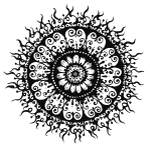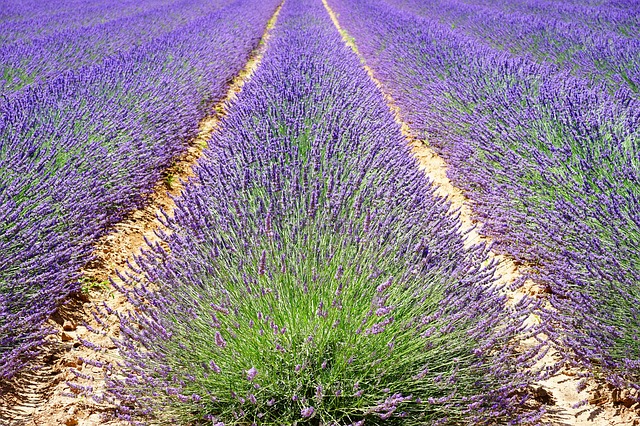Lavender is one of the easiest plant to grow, that gives many therapeutic benefits. In my opinion, lavender is one of the top 5 therapeutic plant or herb that you should have growing in your garden, as part of your “external medicine cabinet”. So let’s get you comfortable growing your first very own lavender plant!
Lavender tends to be grown in mediteranean conditions, so once established, will tolerate dry conditions. It is a hardy perennial (grows all year-round) and loves a cut back to remove spent flower heads.

Look at the plant – see how the leaves form – long narrow soft leaves extruding from a main stem. See how the leafy stems grow low towards the ground, and then long thin stems reach out to the sky to form a flower head. See how the flower is formed of tiny little buds clustered together, ending in a thin “spear”. This particular lavender I am describing, is classic to English lavender, or the Latin botanical name, Lavandula angustifolia or Lavandula officinalis.
Here is another L. angustifolia:

Compare this to another “style” of lavender whose flower heads are shorter and thicker, with 3 petals at the top. This is usually a variety of French lavender, with botanical names of L. stoechas, L. dentata, or L. pedunculata (“butterfly” petals), , and comes in colours of purple or pink:
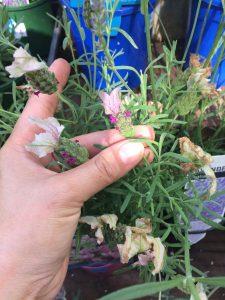
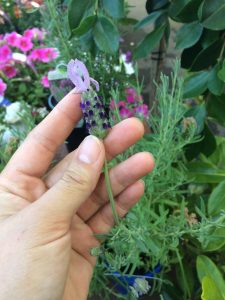
See how lavender grows, close to the ground, usually in a rounded shape. I once referred to this lavender as a “Stately Queen”, and I still see that – beautiful Queen Lavender, calm and composed, overseeing her domain with care and nurturing. And this is very much how lavender is as a healer, in both herbalism books and also aromatherapy resources. Lavender is the all-round healer, gentle for all ages, nurturing and comforting. We can learn a lot about a plant’s particular medicine from simply observing how it grows. This is the concept behind Doctrine of Signatures.
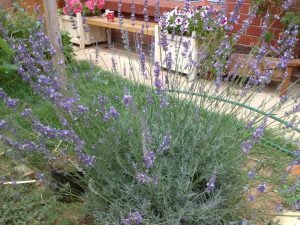
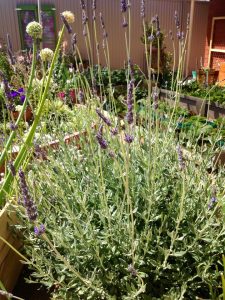
So you can see, it is easy to grow lavender, they are easy to care for and there are many varieties to suit your needs. When you go to pick a bunch of lavender, and come back in a few weeks to find more flower heads, you see the Abundance of this healing plant. Watch the bees hover about the flowering lavender, and you will see how it is a part of a bee-friendly garden. In fact, research has shown that planting lavender beside beehives can help keep the bees calm (have a read of this transcript of an episode on ABC’s Catalyst)! I have also noticed when I added a couple of drops of lavender essential oil to sugar syrup or sugar fondant to feed one of my beehives that was weak in their first winter, they grew to become the healthier of my two hives by the time winter finished! The benefits of lavender extend beyond just us, but also to the environment around you. And if you want to know how else you can use lavender to support your wellbeing, have a look at this blog article, 5 Ways to Use Lavender.
I hope after this, you are inspired to grow your own lavender plant! Let me know in the comments about your lavender plant journey.
